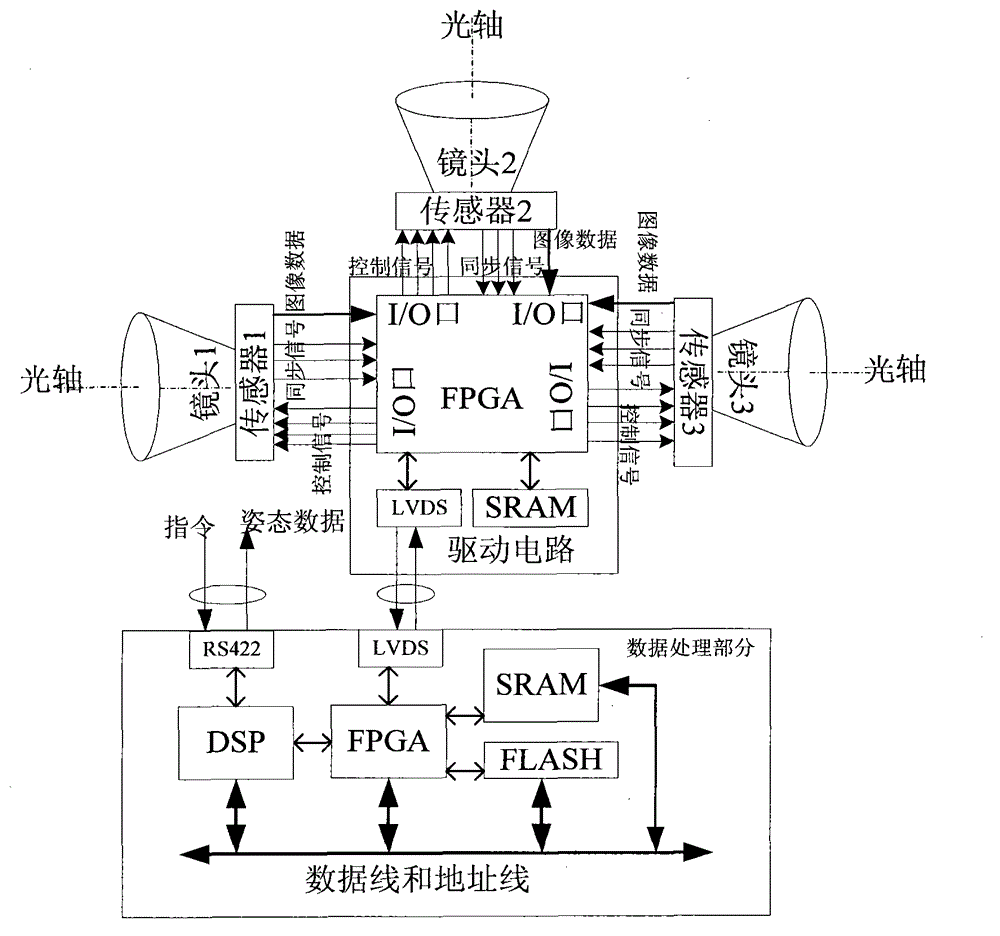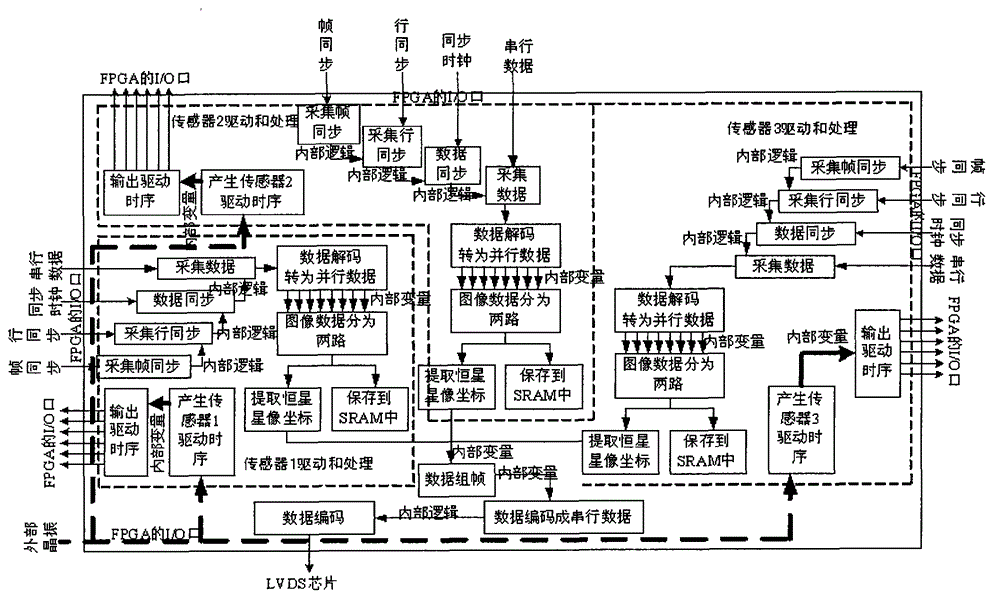High-precision star sensor
A star sensor, high-precision technology, used in astronomical navigation and other directions, can solve problems such as time asynchrony, different crystal oscillators, and inaccurate three-axis attitudes, reducing volume and power consumption, and improving data reliability.
- Summary
- Abstract
- Description
- Claims
- Application Information
AI Technical Summary
Problems solved by technology
Method used
Image
Examples
Embodiment 1
[0035] The design of the present invention is as figure 1 , including three image sensors, each image sensor has an independent lens, and the three image sensors share a driving circuit. Since FPGA has the characteristics of completely parallel operation, this driving circuit only needs one FPGA chip, and the three image sensors The driving signals are all completed by this FPGA chip, which not only greatly reduces the size of the star sensor, but also reduces the power consumption of the star sensor. When the drive circuit receives images from three image sensors, in addition to saving the three images to In SRAM, it is also necessary to extract the stellar image coordinates from the three images. After the stellar image coordinates are extracted from the three images, a packet of data is formed and sent to the data processing part. The data processing part unpacks the data after receiving the data. , respectively identify the star image coordinates of the three image sensors...
Embodiment 2
[0060] Traditionally, to further improve the accuracy of the star sensor, a large area array image sensor is used to design. Although this method can improve the attitude accuracy of the star sensor, its roll angle accuracy is low. The data update rate of the sensor. In order to improve the accuracy of the roll angle of the star sensor, the star sensor is currently designed as multiple probes. The working mode between the probes of the multi-probe star sensor can be synchronous mode or asynchronous mode. The synchronous mode is that multiple probes simultaneously expose the same The star map of time uses the data of all probes and adopts the method of information fusion to improve the accuracy of the star sensor, but in fact, due to the influence of circuit design and process, the time delay is inconsistent, so in actual engineering, all probes cannot be completely the same Take pictures all the time. The asynchronous mode is a time calibration method in which probes are expo...
Embodiment 3
[0063] Take three image sensors, a driving circuit part, and a data processing part as examples below.
[0064] Each image sensor features:
[0065] Field of View: 14°×14°
[0066] Area array: 1024×1024
[0067] Detected magnitude: 6Mv
[0068] Data update rate: 8Hz
[0069] The core FPGA chip of the drive circuit part adopts EP2V8Q208I8, the input crystal oscillator frequency is 40MHz, and the LVDS speed of data transmission is 10Mbps.
[0070] Data processing operating frequency is 50MHz.
[0071] In order to verify whether the accuracy of the high-precision star sensor is synchronized with the star map taken by each image sensor, a comparison is made with the three-field star sensor. The experiment was divided into two groups.
[0072] The first group of experiments is used to test whether there is a phase difference when each image sensor takes a star map. Keep the star sensor relatively stationary with the earth, adjust the orientation of the high-precision star se...
PUM
 Login to View More
Login to View More Abstract
Description
Claims
Application Information
 Login to View More
Login to View More - R&D
- Intellectual Property
- Life Sciences
- Materials
- Tech Scout
- Unparalleled Data Quality
- Higher Quality Content
- 60% Fewer Hallucinations
Browse by: Latest US Patents, China's latest patents, Technical Efficacy Thesaurus, Application Domain, Technology Topic, Popular Technical Reports.
© 2025 PatSnap. All rights reserved.Legal|Privacy policy|Modern Slavery Act Transparency Statement|Sitemap|About US| Contact US: help@patsnap.com



